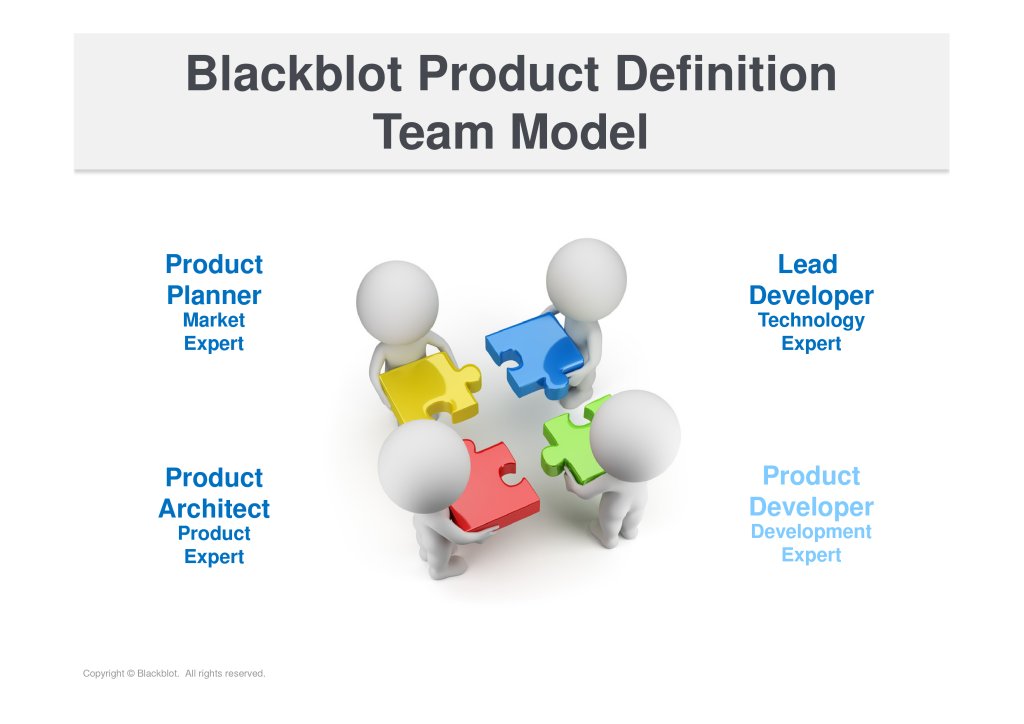MRD Quality Metrics
Question: "My company is in the process of adopting the Blackblot format of writing MRD's and we are seeking some tangible metrics to help us verify that we are properly implementing the methodology.When writing a story, be it a book or news report, one would adhere to the syntactical, grammatical, and structural guidelines which govern the natural language that is used to tell the story.
1) How can we measure the quality of articulation of the market requirements? For example, the statement "User shall be able to find dropped flashlight" satisfies all four directive elements, but does allow for considerable interpretative leeway. After re-reading the Product Manager's Toolkit book, we realized that this can be addressed by bounding the market requirement's directive with constraints and rationales. But how could one measure whether or not the collection of directive statements with their supporting constraints, rationales, and sources would be effective in producing quality PRD's and Specifications?
2) How can we measure if the market requirements that we create have proper traceability to the PRD and Specifications?"
Writing a Market Requirements Document (MRD) is akin to telling the story of a particular market problem that customers have, yet doing so in a formal language that product developers understand and can work with in order to offer a solution to that market problem.
Determining if a story is "good" is accomplished through subjective and judgmental interpretation of various criteria which the onlooker beholds as being relevant. These criteria could be anything from proper and eloquent use of the natural language, to clarity of the messages conveyed, document structure, etc'. With so many personal biases and limitations, there is not and cannot be any true universal, mechanical, and measurable way to determine the quality of any expressive work such as a book, painting, movie, or an MRD.
It is very possible to verify if a market requirement is properly-written (from a formulaic/formal or natural language perspective) and there are several sets of guidelines to this effect in the models and templates that comprise Blackblot's Procedural Requirements Management™, a methodology to create consistent and usable market requirements. For example, please see below a table with the Six C's of a Good Market Requirement.
But unfortunately there are no quality metrics to measure or grade the level of articulation of a market requirement. Furthermore, while every market requirement in the MRD should have some manifestation in the product, there is no clear and definitive way to preliminarily assess the level of contribution, impact, and importance that a market requirement will have upon the resulting cascade of product requirements and technical specifications. Finally, although it is possible to logically verify the existence of traceability between a market requirement and the related product requirement(s), there is no qualitative way to measure the level of suitability that the assigned product requirement(s) provide to the demands posed by the market requirement.
So when writing requirements of any kind, the quality of work will always come down to the competency levels and judgment calls that are made by proficient and knowledgeable product planners and product architects.
| Six C's of a Good Market Requirement | |
| Factor | Description |
| Clear | Only one semantic interpretation. |
| Complete | All four directive components and other key information are present. |
| Concise | Complexity and clutter have been eliminated to enhance understandability. |
| Consistent | Requirements do not conflict. |
| Correct | Accurate description of user needs. |
| Criterial | Verified using a pass/fail metric. |
For more information, please see the relevant models and templates in Blackblot’s Product Manager’s Toolkit® (PMTK), the Blackblot Procedural Requirements Management™ Model (PRM) Model, and the Blackblot Product Definition Team Model. This topic is explained in length in the Blackblot "Crafting Market Requirements" chapter in the PMTK Book.

